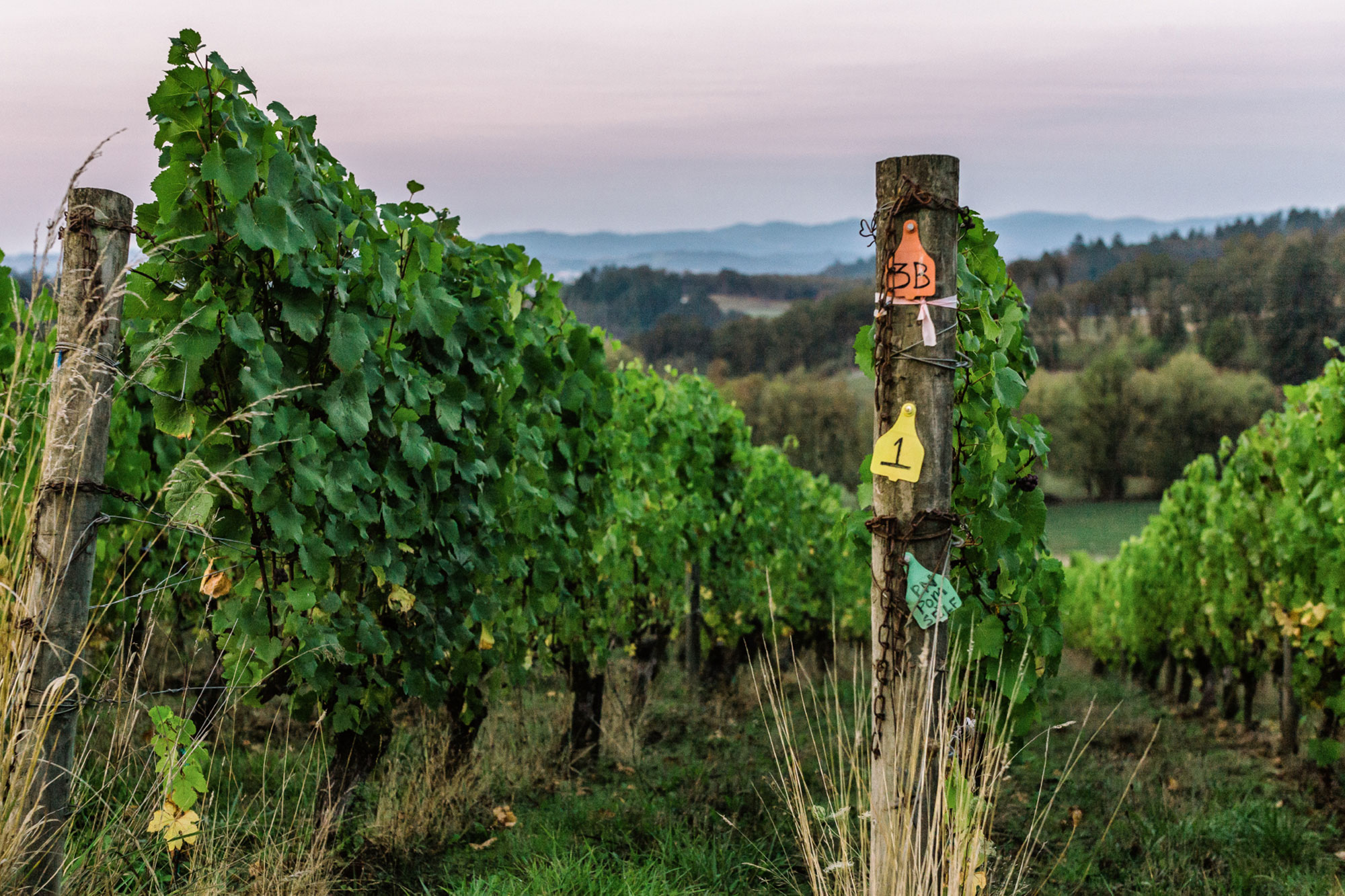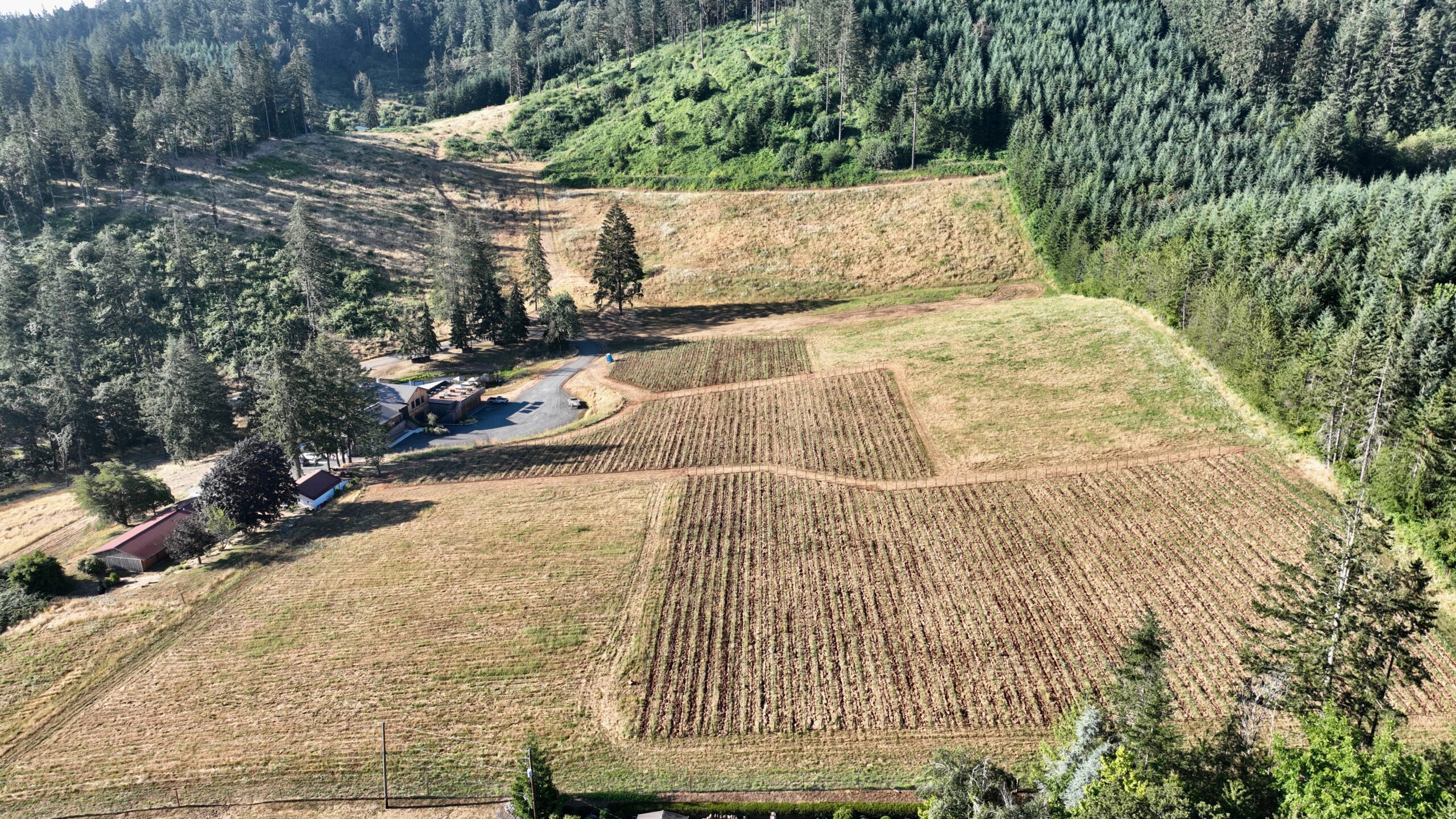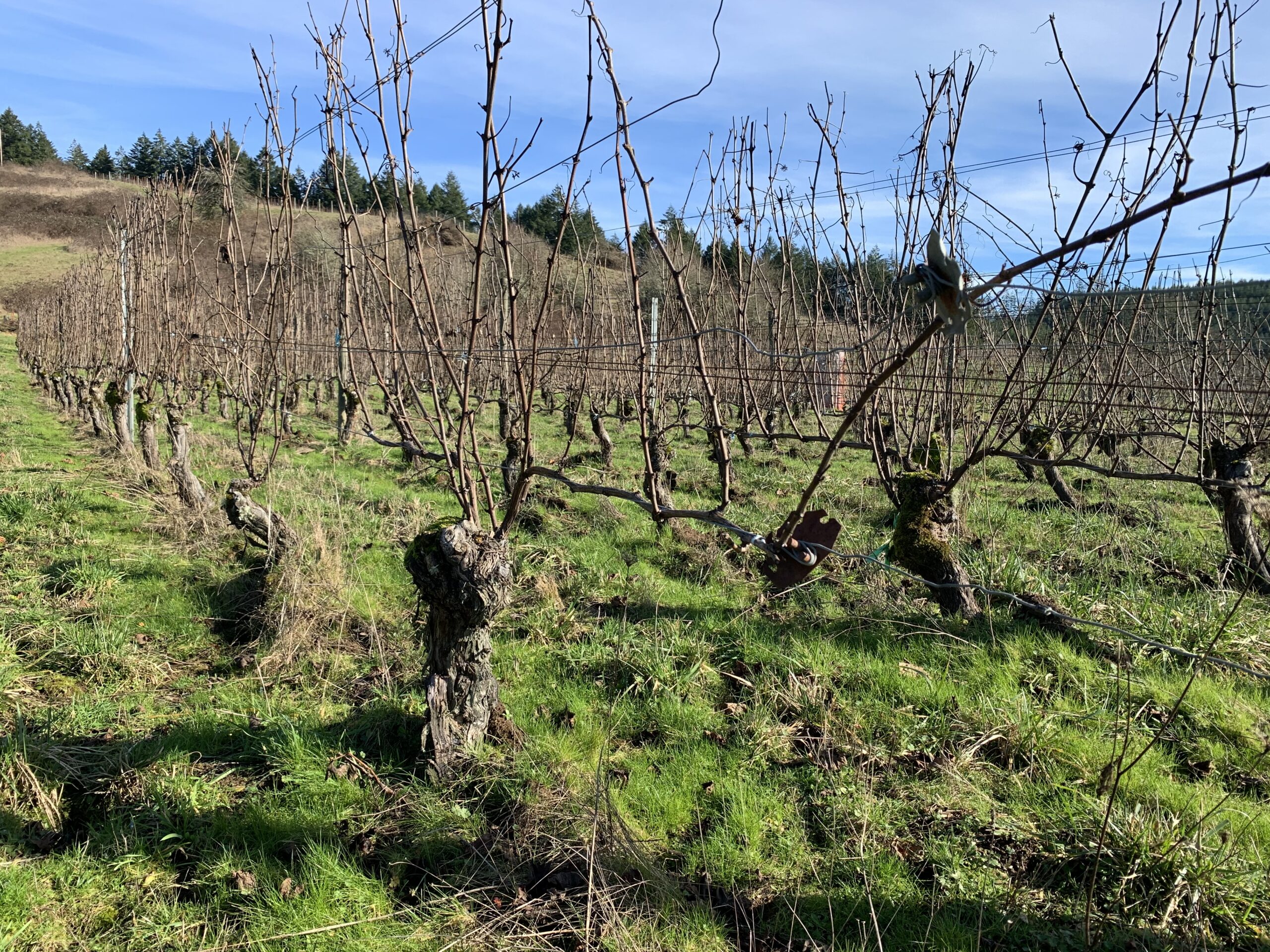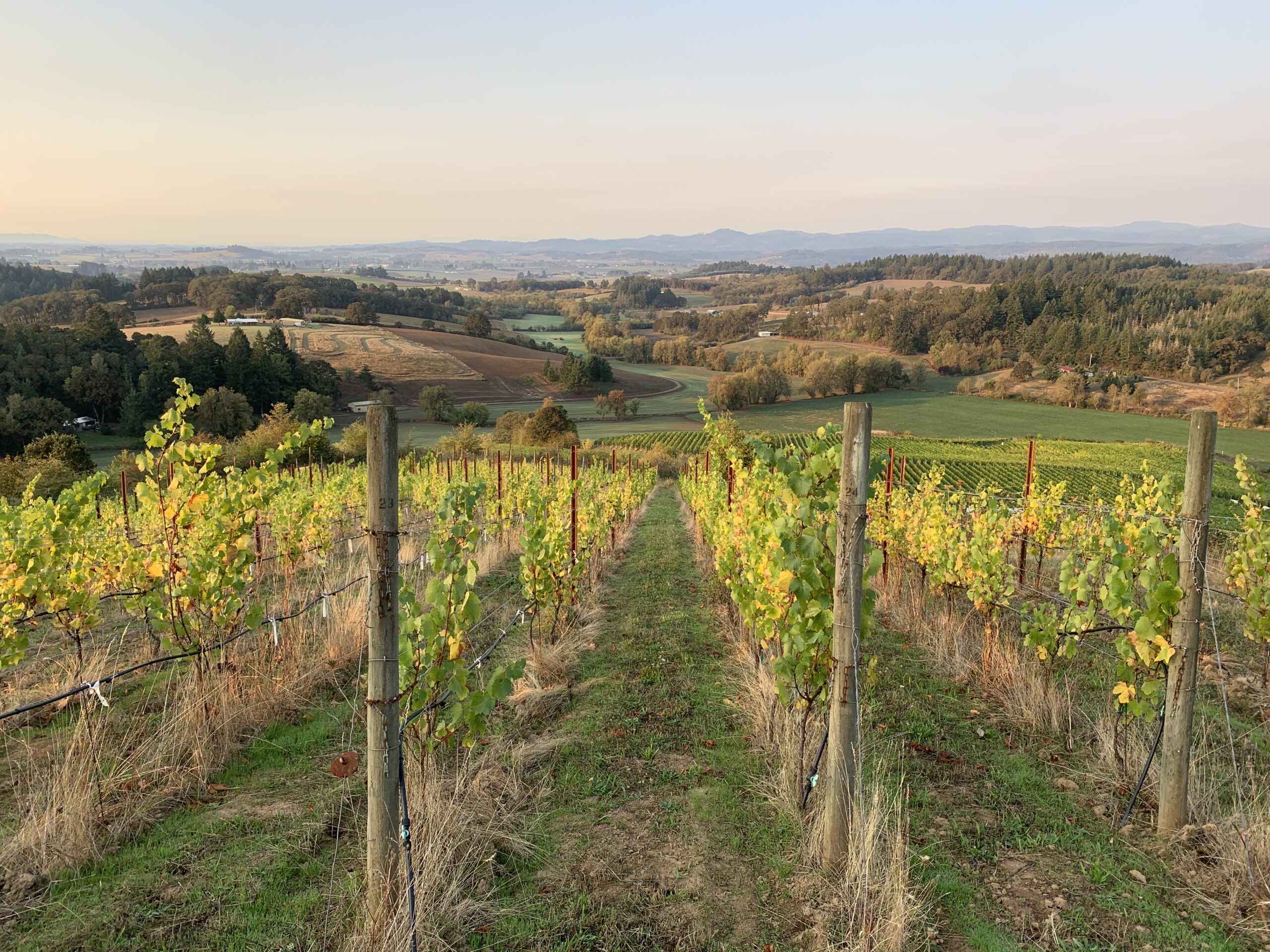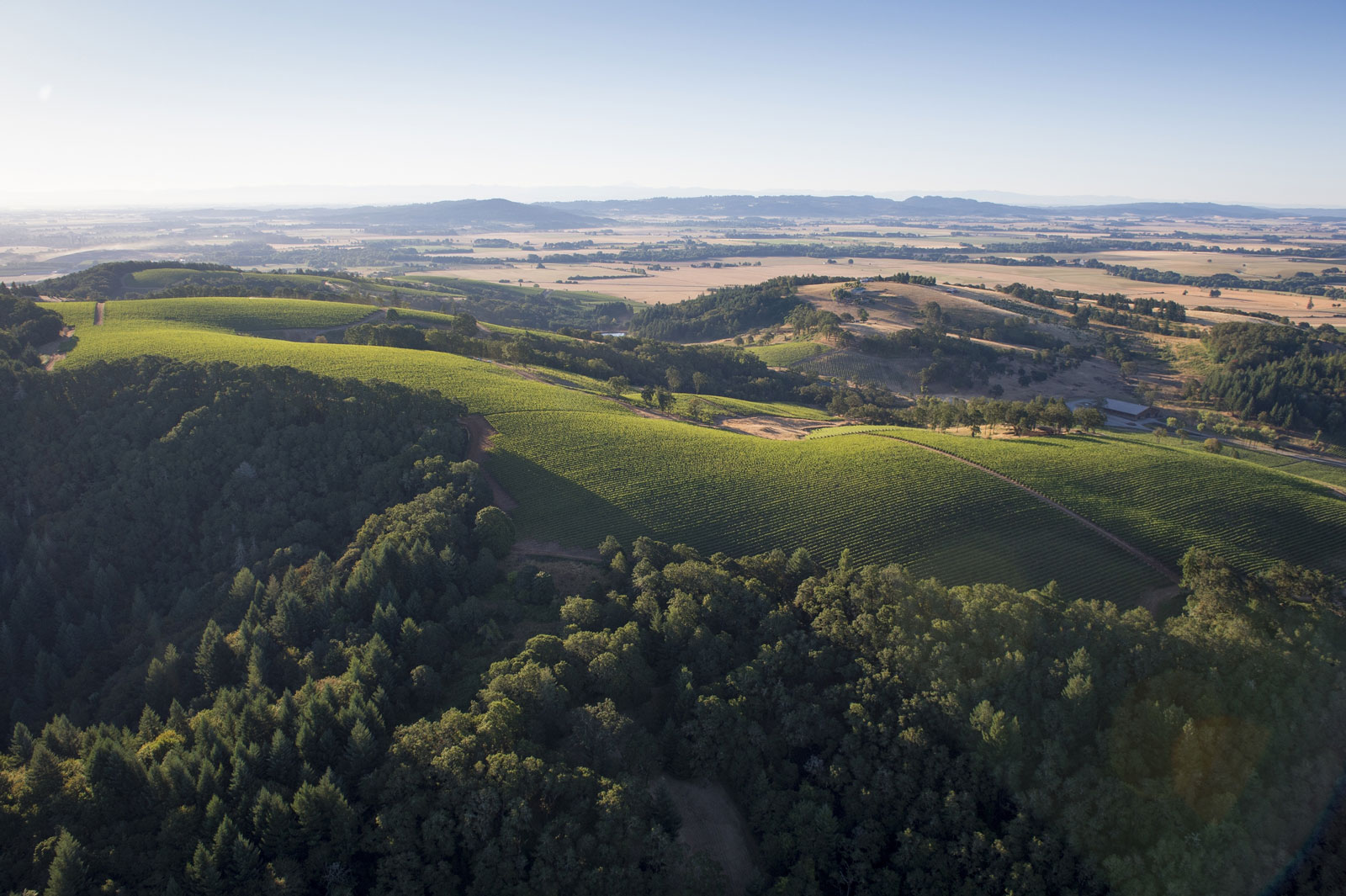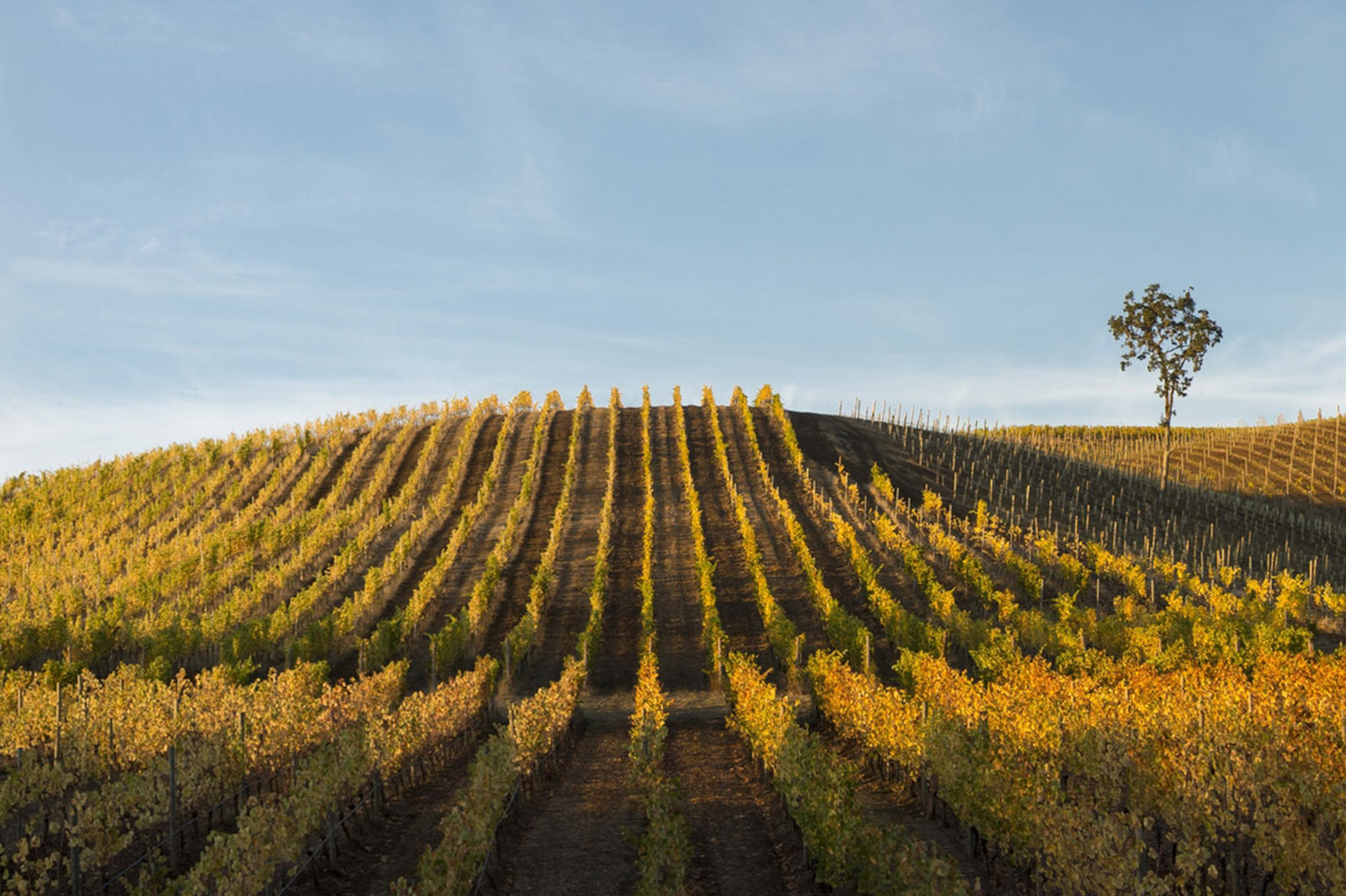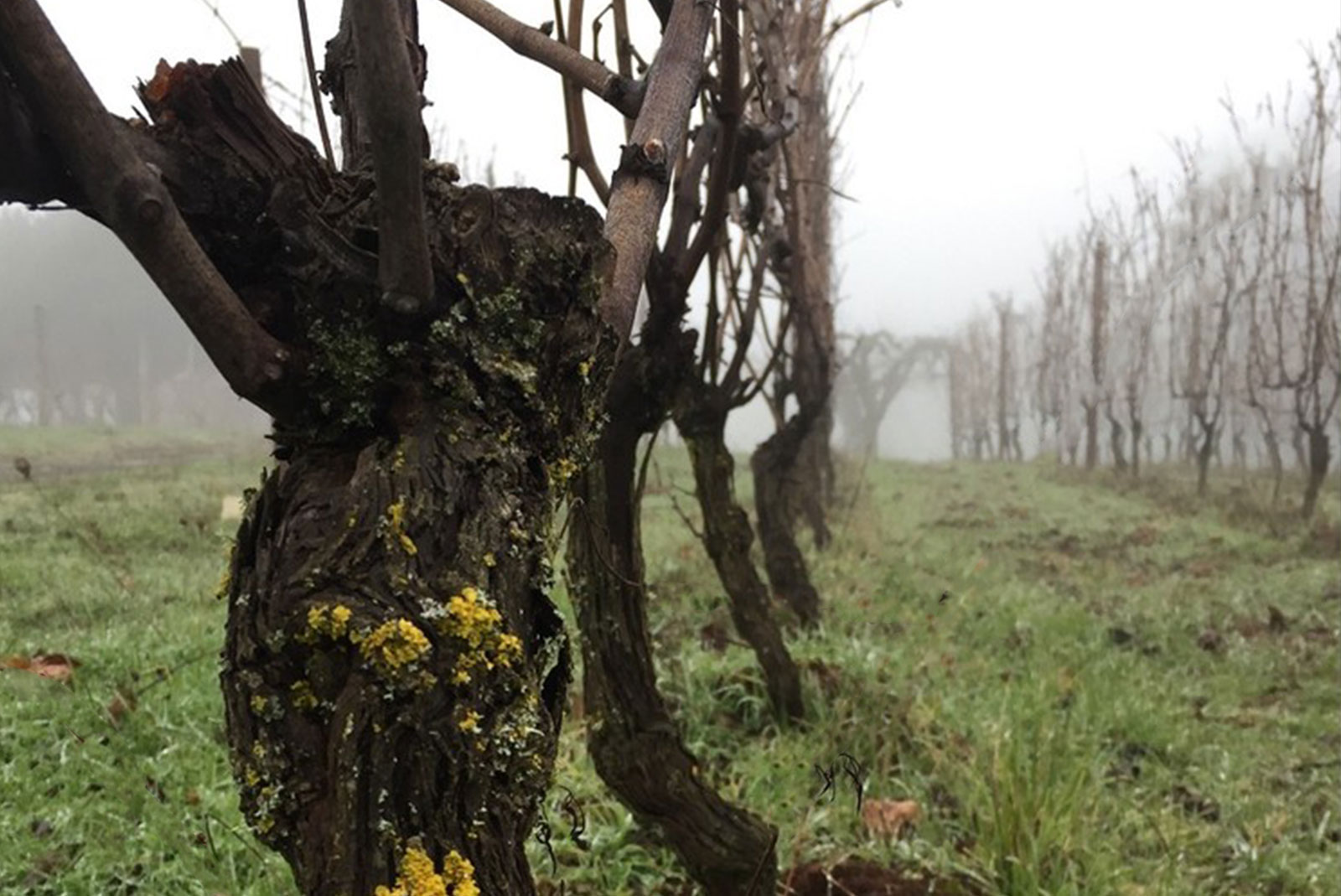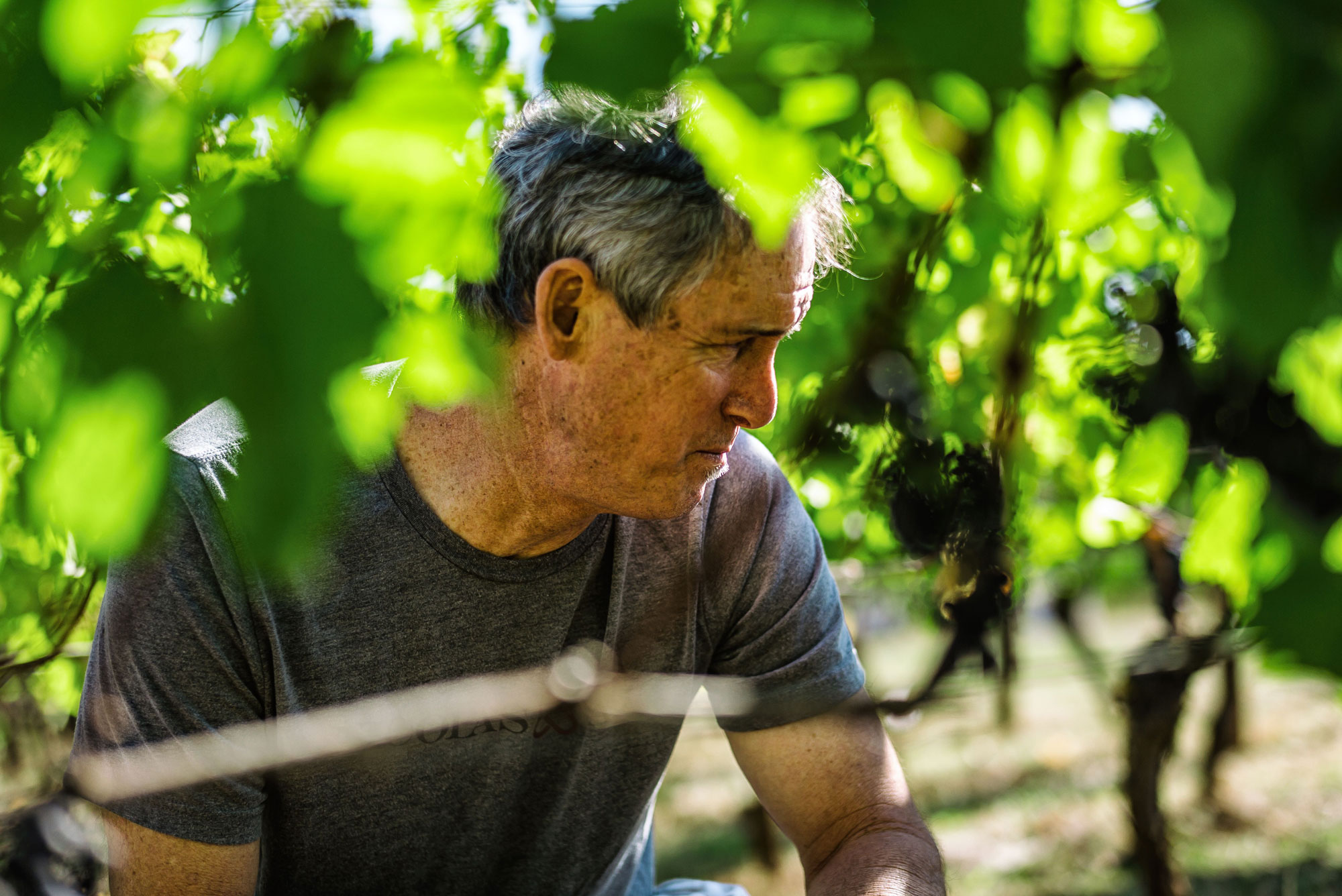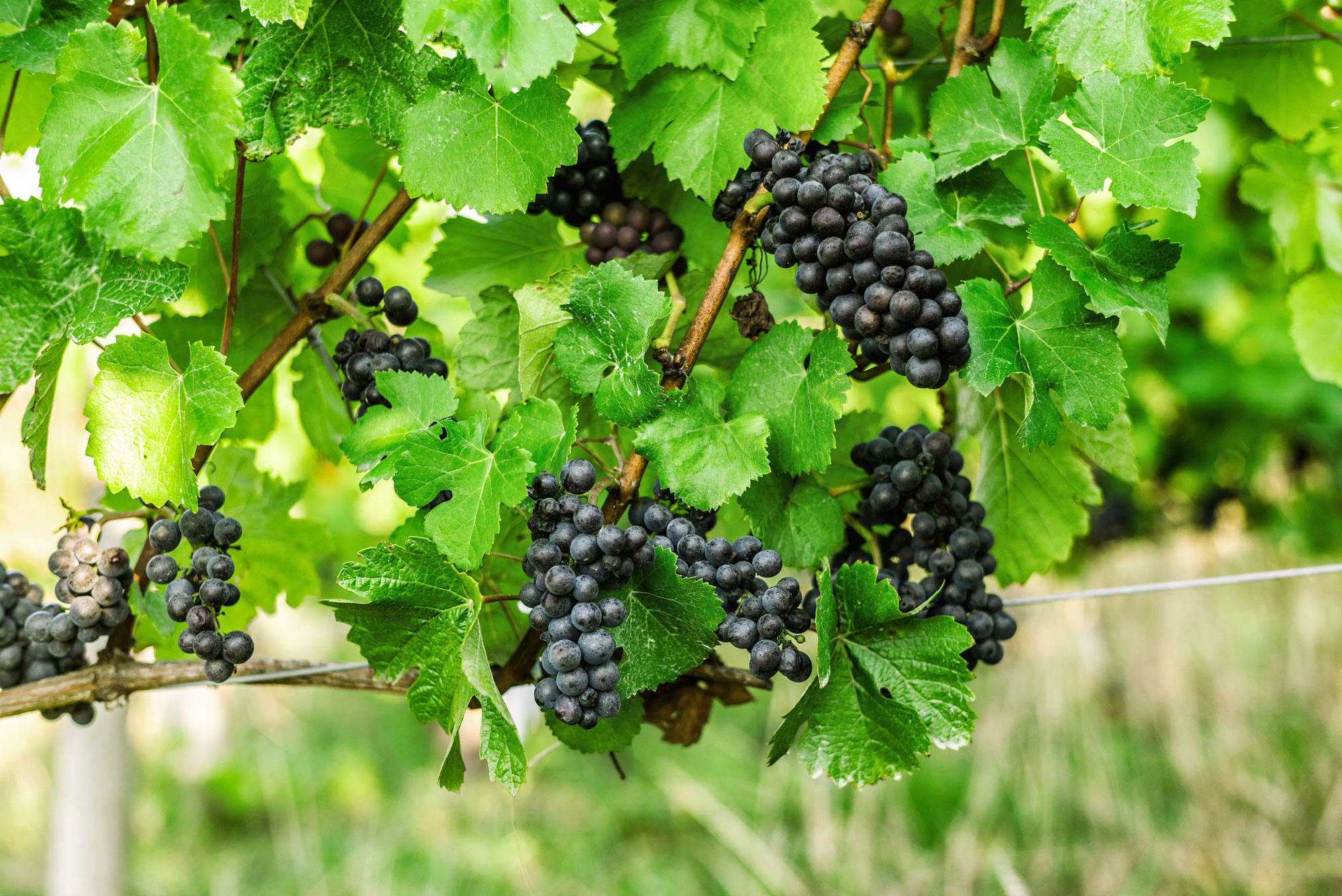Our Vineyards
The hills overlooking the Willamette Valley tell a story of change and uplift, basalt flows and flooding events. Nicolas-Jay is proud to draw fruit from vineyards representing the breadth of geologic diversity and mesoclimates our Valley contains. Using no-till, all organic methods, we farm Bishop Creek Vineyard, on the sedimentary soils of the Yamhill-Carlton AVA, and have recently planted Pinot Noir on the deep volcanic soils of our own Dundee Hill Estate. We source dry-farmed, organic and biodynamic fruit from the best vineyards in the North Willamette Valley for single vineyard and cuvée bottlings.
Our Vineyards
We work with the highest quality fruit from our own organically-farmed Bishop Creek and from esteemed vineyards throughout the Willamette Valley wine region, including Nysa, Momtazi, and Knight’s Gambit, among others.
The Willamette Valley is, like Burgundy, shaped by prehistory. Our hillsides are records of events that occurred before feet trod our soils, and a vineyard walk can be a look into deep geologic time. Our present-day climate is itself an extension of this history, as two mountain ranges, the volcanic Cascade Range and the sedimentary Coast Range, delimit and define the growing season of this valley.
Our oldest soils lifted with the Oregon Coast Range 20 million years ago, sediments of ancient rivers, fossil-rich marine shelves thrust skyward as tectonic plates converged. Ancient basalt, once ocean floor, erratically protrudes from this sedimentary soil across the Coast Range’s mountainous landscape. A different, more cataclysmic volcanic history followed, as the Columbia River Basalt Flows inundated the nascent Willamette Valley with super-hot, mafic lava – liquid rock which crested many of our eastern hillsides. As this basalt cooled and weather, Oregon was given the red, loamy Jory soils that are so strongly associated with our Pinot Noir.
The vineyards of the north Willamette Valley also benefit from their macro- and meso-climates, and our surrounding mountain ranges both shelter and selectively expose vineyard slopes. We are protected from the harshest of winter temperatures by the towering Cascade Range, which provides a rain shadow for comparatively arid Eastern Oregon, and rings out more than 50 inches of precipitation a year for Western Oregon’s intermontane valleys. Oregon’s Coast Range is smaller, but arguably more important for Willamette Valley viticulture, as their 3000ft peaks shelter our valley from Pacific marine layer, and facilitate sunny, dry growing conditions. At low-elevation passes through these deep, forested mountains, the ineluctable Pacific climate pushes toward our valley – its presence can be felt on summer evenings, as cold, powerful winds rush down vine rows to the valley floor.
Each vineyard we work with has a unique place in this interplay of geology and climate. Our aim is to produce transparent wines, which reveal not only the craft of winemaking honed in Burgundy, but the ancient hillsides that produced these grapes.
Nicolas-Jay Estate Vineyard
The first vineyards planted in the Dundee Hills are perched above the Willamette Valley on southern and eastern slopes. To the north and west of these sites one finds fewer vineyards, denser stands of Douglas Fir and Hemlock, and a forest floor reminiscent of the Oregon Coast Range: sword fern and vine maple, salal and chanterelle mushroom. Small farms share the hillsides with forest in these quiet corners of Dundee. Nicolas-Jay is proud to farm 53-acres in a secluded dale on the north slopes of the Dundee Hills, facing the Chehalem mountains. This natural amphitheater is overlooked by ridges of fir and Oregon white oak – near the highest elevations of the Dundee Hills – which we will preserve as a habitat for local wildlife.
The 25 plantable acres on this site face east, and rest on deep Jory soil, the volcanic colluvium which defines the Dundee Hills and provides their wines’ characteristic delicacy. We have planted 1.61 acres of Chardonnay and 1.88 acres of Pinot Noir. As with our Bishop Creek Vineyard ten miles to the west, we practice no-till agriculture, nourishing the mycorrhizal layer, increasing water retention, and mitigating erosion. A pollinator garden and orchard will accompany our vines, and we hope the sense of undisturbed beauty and wildness that defines this place will grace its wines.
Bishop Creek Vineyard
This vineyard was first planted to ungrafted rootstock in 1988 on tight 5×5 rows of three Pinot Noir clones (Pommard, Wädenswil, 777) in north-south facings blocks. This iconic site in the northern reaches of Yamhill-Carlton also features high-elevation Chardonnay clones (76, 95, 548) on the upper-bench of the property on rootstock dating back to the late 1990’s. Dramatic elevation changes, rugged growing conditions and an extremely low water table has pushed root systems deep (30-40’) into the porous and nutritionally deficient marine sedimentary soils of the Eocene Era and alluvial sands of the Missoula floods to produce wines of profound texture and immense structure. Nicolas-Jay Estate acquired Bishop Creek in 2014.
Explore Bishop Creek Vineyard with the interactive map below
Momtazi Vineyard
Southwest of McMinnville, the Willamette Valley meets the foothills of the Coast Range, and Oregon White Oak savannah mingles with Douglas Fir in a system of rolling hills and valleys. Here the McMinnville AVA is notable both for its size and the relative scarcity of planted acres, giving the AVA a remote, secluded charm. In 1997 Mo and Flora Momtazi purchased a 500 acre wheat farm in these hills, and began converting a portion of it to biodynamically farmed Pinot Noir. Today the property is one of the premiere vineyards in Oregon, and contains a diversity of soils and microclimates.
The nearby Van Duzer corridor, a low pass through the mountains which allows coastal air to enter the Willamette Valley, cools these vines, which sit atop a mixture of volcanic and marine sedimentary soils. Domaine Nicolas-Jay’s block of Pinot Noir lies near the top of the vineyard, at an elevation of 740 feet, with a north-south row orientation and 5’ x 7’ spacing. Elevation, coupled with cool evenings and persistent winds, cause the grapes to ripen slowly, developing a striking combination of concentration, restraint, and earth-driven characteristics.
Nysa Vineyard
Situated at an elevation of 600 to 700 feet in the Dundee Hills, 40-acre Nysa Vineyard was planted in 1990 by Michael Mega, and is recognized as the source for some of Oregon’s most exciting Pinot Noirs. Nicolas-Jay’s grapes come from a coveted block of own-rooted Pommard clone vines that are some of the site’s original 1990 Plantings. These tightly spaced vines grow in Jory volcanic soils with an underlying layer of basalt bedrock that helps allow the vines to be dry farmed. The older vines on this block naturally produce yields of just under 2.0 tons per acre.The resulting wine from this old-vine Dundee Hills site is fragrant, elegant and enticing, with concentrated red fruit, strawberry and candied cherry. High elevation contributes a backbone of acidity and fine-grained tannin.
Temperance Hill Vineyard
The Eola-Amity Hills rise over 1000 feet above the Willamette Valley, and their great high-elevation vineyards face the Cascade Range from across the wide river valley. One of the oldest of these vineyards, Temperance Hill, was planted in 1981, and is today one of the most desirable sites in the AVA. A cool, high-elevation site, Temperance Hill receives the same coastal winds that affect Momtazi Vineyards to the west, producing fine, aromatically complex, and highly distinctive wines.
L’ Ensemble
Beyond Nicolas-Jay’s three vineyard-designate wines, we are proud to work with passionate and exacting farmers across the Willamette Valley to source Pinot Noir for our L’Ensemble cuvée. This wine reflects the character of a vintage, rather than a specific vineyard across a growing season, and is the product of meticulous blending and barrel selection. As such, the blend will change from year to year, as we seek to produce a balanced and expressive representation of the Willamette Valley. Each of these vineyards that appear in this blend can stand alone (indeed Bishop Creek, Nysa, and Momtazi fruit frequently appear in the blend) however L’Ensemble provides us the exciting opportunity to present our winemaking philosophy, from vineyard to cellar, and achieve of a panoptic view of the Willamette Valley across a given vintage.

